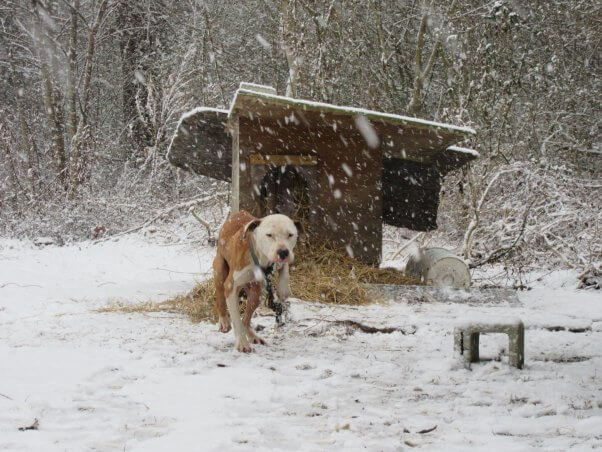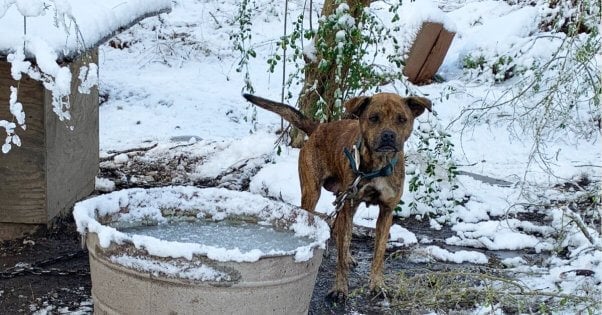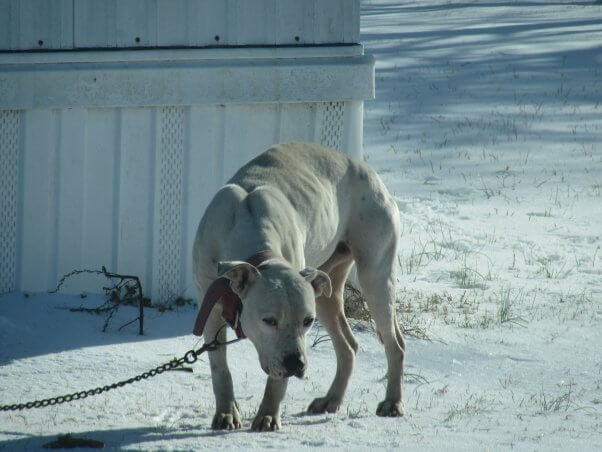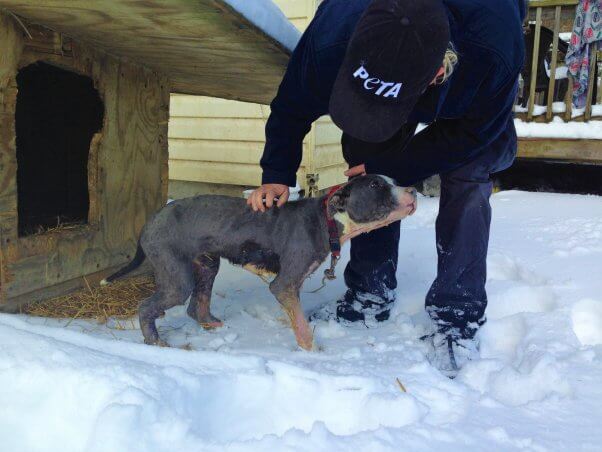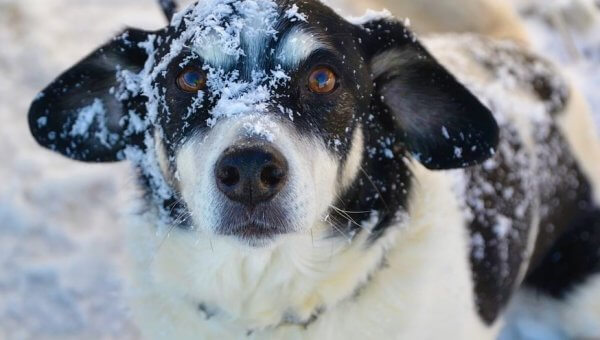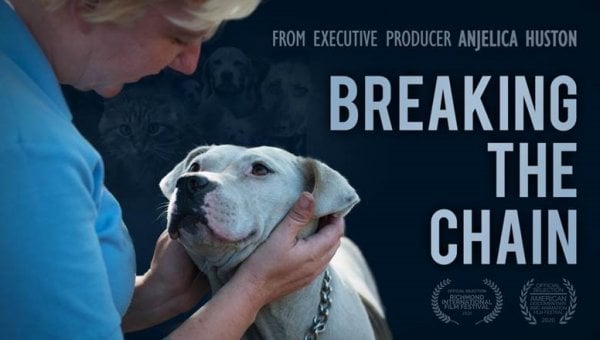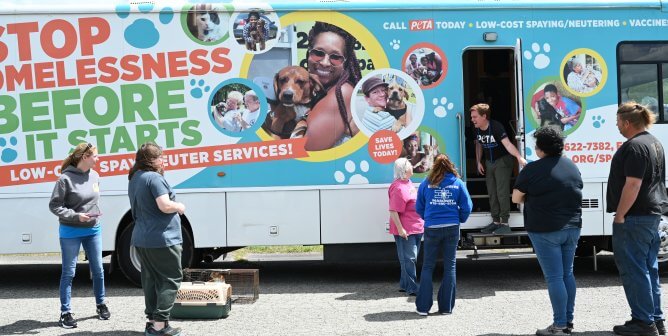- Bring them indoors. Companion animals should always live indoors. “Backyard dogs” and “outdoor cats”—like those featured in Breaking the Chain, the documentary about PETA’s Community Animal Project (CAP)—often go without adequate food, water, shelter, and veterinary care. They are no better equipped to survive freezing temperatures or extreme weather conditions than humans are, they suffer terribly from frostbite, and they can die of exposure. Puppies and kittens, elderly animals, small animals, and dogs with short hair, including pointers, beagles, pit bulls, Rottweilers, and Dobermans, are particularly susceptible to the elements.
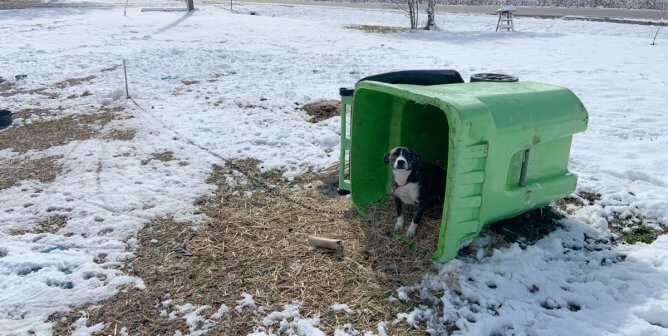
- Gear up. Warm sweaters or coats will keep dogs comfortable in cold weather, secure harnesses can help prevent them from getting loose on walks, and booties will protect their sensitive paw pads from the frozen ground. Keep walks short in cold weather, especially for shorthaired dogs.
- Don’t allow your cat or dog to roam freely outdoors. In cold weather, cats sometimes climb under the hoods of cars to be near warm engines and are badly injured or killed when the car is started. (To help prevent this, bang loudly on the hood of your car before starting the engine.) Animals can also become disoriented when there is snow or ice on the ground.
- Increase animals’ food rations in cold weather. In cold weather, animals burn more calories to keep warm. Also, be sure that animals are free of internal parasites, which can rob them of vital nutrients.
- Keep an eye out for strays. Take unidentified animals inside until you can find their guardians, or take them to an animal shelter. If strays are wild or unapproachable, provide food, water, and shelter (stray cats will appreciate a small doghouse filled with warm bedding), and call your local humane society for assistance in trapping them and getting them indoors.
- Clean off your dogs’ or cats’ legs, feet, and stomachs after they come in from the snow. Salt and other chemicals can make animals sick if they are ingested while the animals are cleaning themselves.
- When you see dogs left outdoors, provide them with proper shelter. Doghouses should be made of wood (metal is a poor insulator) and positioned in a sunny location during cold weather. Raise the house several inches off the ground, and put a flap over the door to keep out cold drafts. Use straw for bedding (rugs and blankets can get wet and freeze).
- Buy nontoxic antifreeze made with propylene glycol instead of ethylene glycol, which can kill animals even in small doses. Safe brands include Sierra and Prestone Lowtox. Animals are attracted to antifreeze for its sweetness, so clean up spills quickly, and buy brands with the bittering agent denatonium benzoate.
- Don’t forget birds and other wildlife. During extreme winter weather, provide birds and other wildlife with access to an emergency water supply by filling a heavy nonmetal water bowl (tongues can freeze to metal) and breaking the surface ice at least twice a day. While it’s best to provide natural sources of food and shelter for birds by planting flowers and trees that produce seeds and berries, birds may need an extra boost during the winter, when they are burning extra calories to keep warm. Use a blend of seeds that includes oiled sunflower seeds, which are high in calories. Remember to stop the feeding when the weather warms up. An artificial food source causes wild animals to congregate in unnaturally large numbers in areas where they may be welcomed by some, but not others, and it can also make them easy targets for predators. Eventually, they may lose their ability to forage for food on their own entirely.
Good Samaritans who see companion animals kept chained or penned outside 24/7 or without adequate shelter from the elements should note the animals’ exact location and alert local law-enforcement authorities immediately. Anyone who leaves animals outside to suffer in severe weather may be prosecuted.
If you live in North Carolina and want to help chained and penned dogs, click below to contact us.

